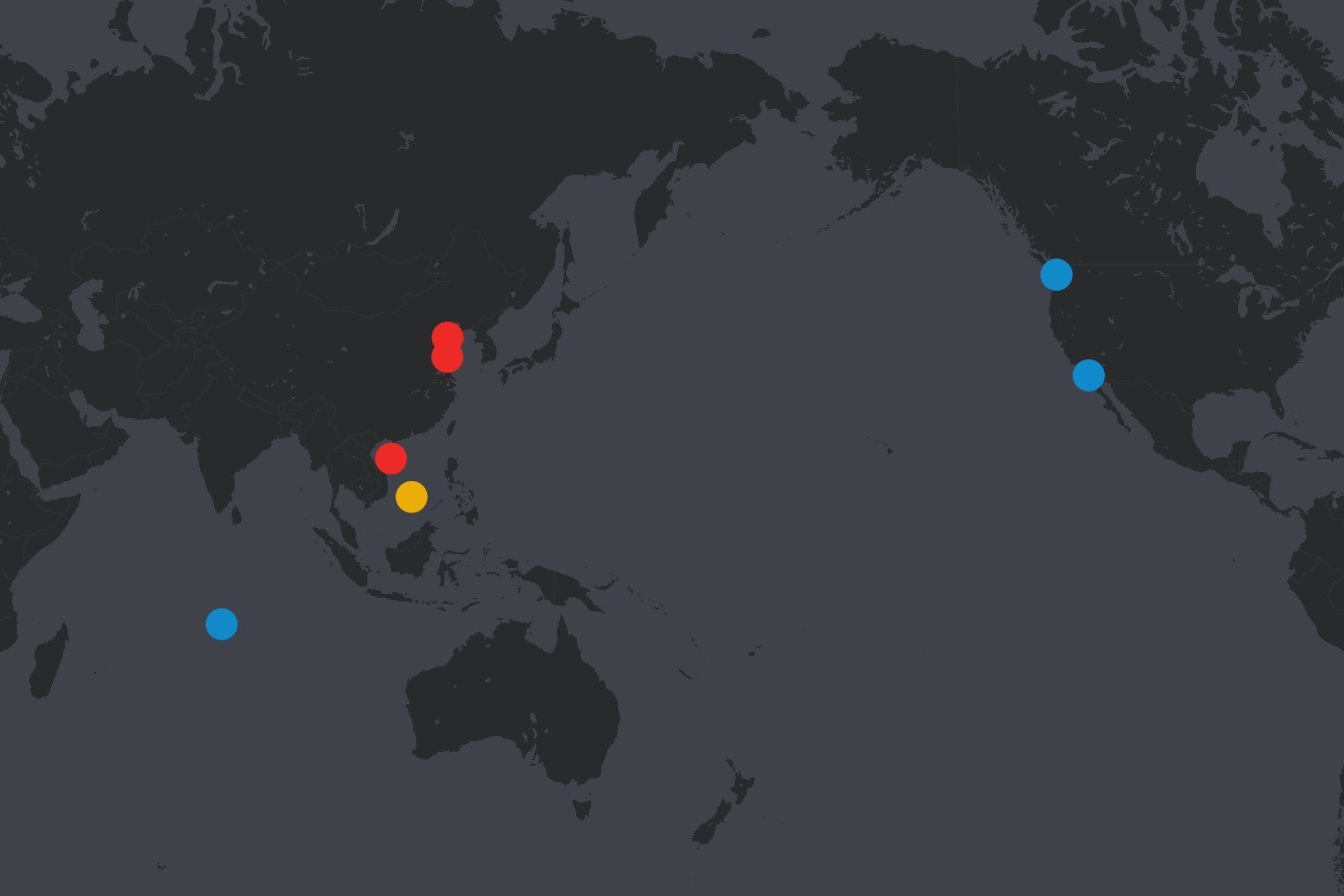Newsweek‘s weekly update maps U.S. and Chinese aircraft carrier movements in the strategic Indo-Pacific region and, as of September 13, the locations of at least nine ships were publicly available via military disclosures or open-source satellite imagery.
One of the U.S. Navy’s six West Coast-based aircraft carriers made its way back from the tense Middle East region to the contested Indo-Pacific area, closing the U.S.’s “sea power gap.”
One of China‘s three “flat-tops” was underway in the country’s nearby waters in the Bohai Sea. The rest of them are in their home ports.
And, an aircraft carrier sent by NATO member Italy was operating in the South China Sea, joining a multilateral exercise with the U.S. and Australia.
Aircraft carriers are major platforms used by countries to project sea power in support of national interests and foreign policy in their immediate region and beyond. The U.S. Navy has the world’s largest aircraft carrier fleet with 11 in service. China ranks second with three ships.
U.S. Navy
USS Theodore Roosevelt: Indian Ocean
The Theodore Roosevelt has been operating in the Middle East since July 12 after a diversion from scheduled deployment in the Western Pacific Ocean. It has left the region and begun transit into the Indo-Pacific Command’s area of responsibility, the U.S. Defense Department said on Thursday.
The military command’s large area of responsibility stretches from the waters off the American West Coast to the western maritime border of India, which also includes parts of the Indian Ocean.

U.S. Navy
The Theodore Roosevelt was expected to be in the Indo-Pacific Command’s region on Thursday, The Associated Press reported earlier. The Pentagon‘s announcement implied that the aircraft carrier was transiting from the Gulf of Oman—its previous area of operations—to the Indian Ocean.
Meanwhile, USS Abraham Lincoln, a second U.S. aircraft carrier that diverted from the Western Pacific Ocean and arrived in the Middle East on August 21, remained on station in the region. It was underway in the Gulf of Oman with its carrier strike group, according to The Associated Press.
Both the deployed aircraft carriers are based at Naval Air Station North Island in San Diego, California. The Theodore Roosevelt departed in January and the Abraham Lincoln left in July.
USS Nimitz and USS Ronald Reagan: Bremerton, Washington
The Nimitz was pierside at Naval Base Kitsap in Bremerton, Washington. It was reportedly at Naval Magazine Indian Island, north of Bremerton, to load ammunition from September 4-6.
The lead ship of the 100,000-ton Nimitz-class supercarriers, which was commissioned in 1975, is scheduled to begin retirement in 2026. The Navy has requested Huntington Ingalls Industries to submit a deactivation plan by November, according to U.S. military newspaper Stars and Stripes.

Mass Communication Specialist 2nd Class Daniel G. Providakes/U.S. Navy
Meanwhile, the Ronald Reagan arrived at Naval Base Kitsap on August 13, following a hull swap at North Island with sister ship USS George Washington. It was previously stationed at Yokosuka naval base in Japan. A hull swap refers to an operational transition between two aircraft carriers.
It is being prepared for an estimated 17-month maintenance program scheduled to begin in March 2025 at Puget Sound Naval Shipyard and Intermediate Maintenance Facility in Bremerton.
USS Carl Vinson and USS George Washington: San Diego, California
Open-source satellite imagery showed that both the Carl Vinson and the George Washington were pierside at Naval Air Station North Island. The latter was in preparation for its deployment to Yokosuka this fall as the Navy’s forward-deployed aircraft carrier, replacing the Ronald Reagan.
People’s Liberation Army Navy
CNS Liaoning: Qingdao, Shandong
China’s first operational aircraft carrier, the Soviet-built Liaoning, continued pierside at its home port in Qingdao, a city in eastern province of Shandong, according to open-source satellite imagery. It was observed not at the port on August 30 and was in the Bohai Sea for training until September 6.
CNS Shandong: Sanya, Hainan
The Shandong, the second Chinese aircraft carrier in service, was spotted pierside at its home port in Sanya on the southern island province of Hainan, satellite imagery captured on Friday showed.

Sentinel Hub
The South China Sea-based aircraft carrier was spotted in the waters 229 miles southeast of Sanya on Sunday. “It is believed that the carrier set sail to avoid Typhoon Yagi, which swept through the region over the weekend,” according to Duan Dang, a Vietnam-based maritime security analyst.
CNS Fujian: Bohai Sea
The Fujian, the Chinese navy’s third and most advanced aircraft carrier, continued its fourth sea trial in the Bohai Sea, according to satellite imagery captured on Thursday. It departed from Shanghai’s Jiangnan Shipyard on September 3 and was previously underway in the Yellow Sea.

Sentinel Hub
Italian Navy
ITS Cavour: South China Sea
The Italian navy said a carrier strike group led by the Cavour concluded its visit to Manila, the capital city of the Philippines, on Sunday. It then conducted an exercise in the South China Sea with the U.S. Navy and the Royal Australian Air Force until Wednesday, according to the U.S. Seventh Fleet.

Mass Communication Specialist 3rd Class John A. Miller/U.S. Navy
This exercise was “a concrete demonstration of the advances we are making alongside our allies and partners in the region, “said Vice Admiral Fred Kacher, the Seventh Fleet’s commander.
According to Naval News, the Cavour is expected to visit Indonesia and Singapore afterward, and it will arrive in India, Pakistan, Oman, and Saudi Arabia before returning to Italy by November.
